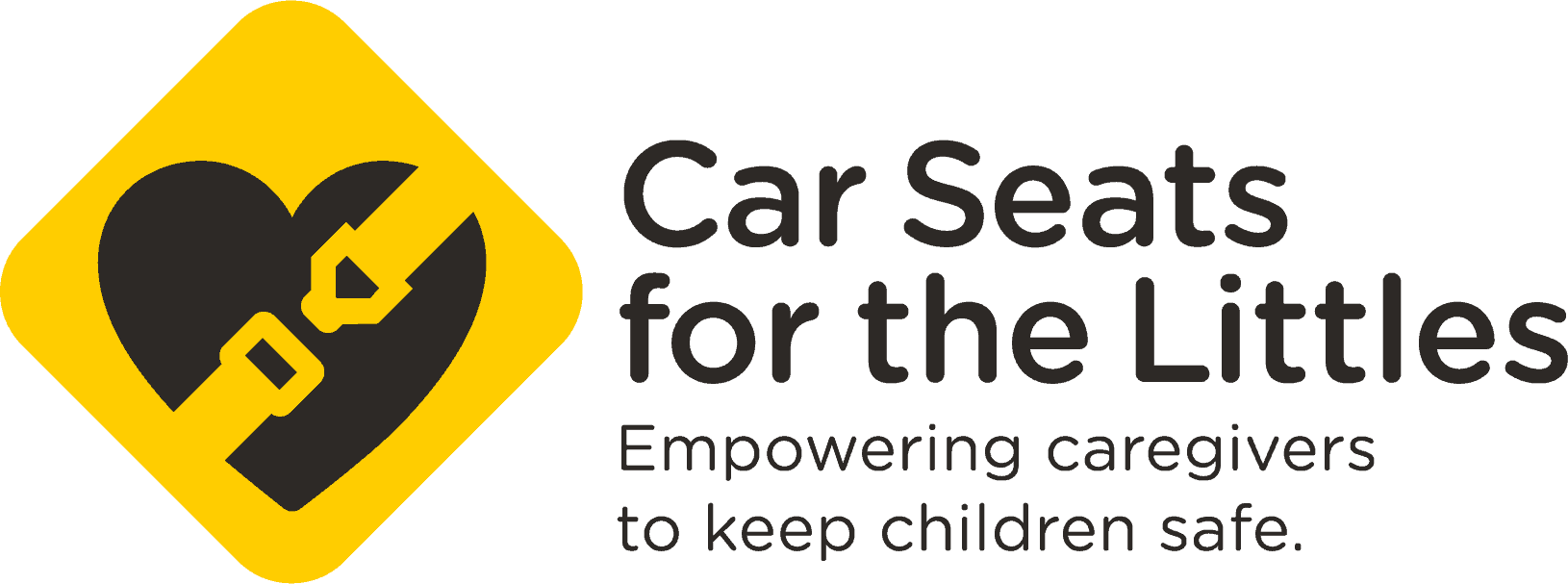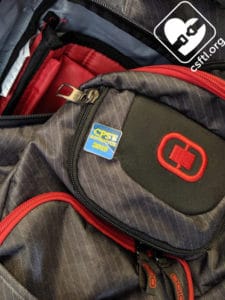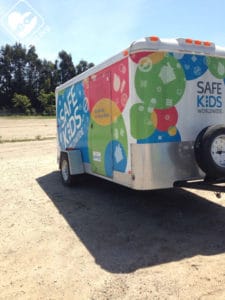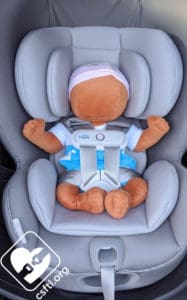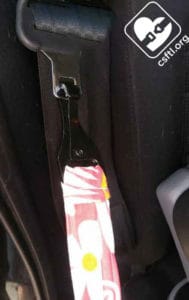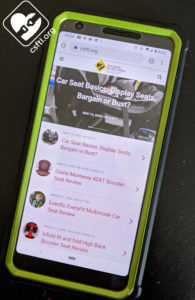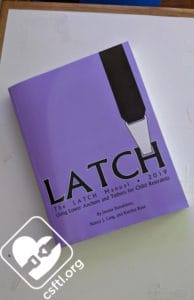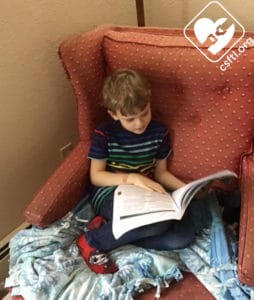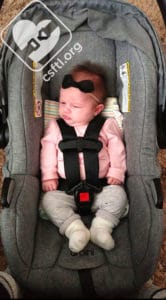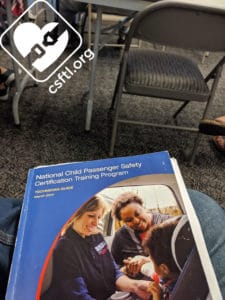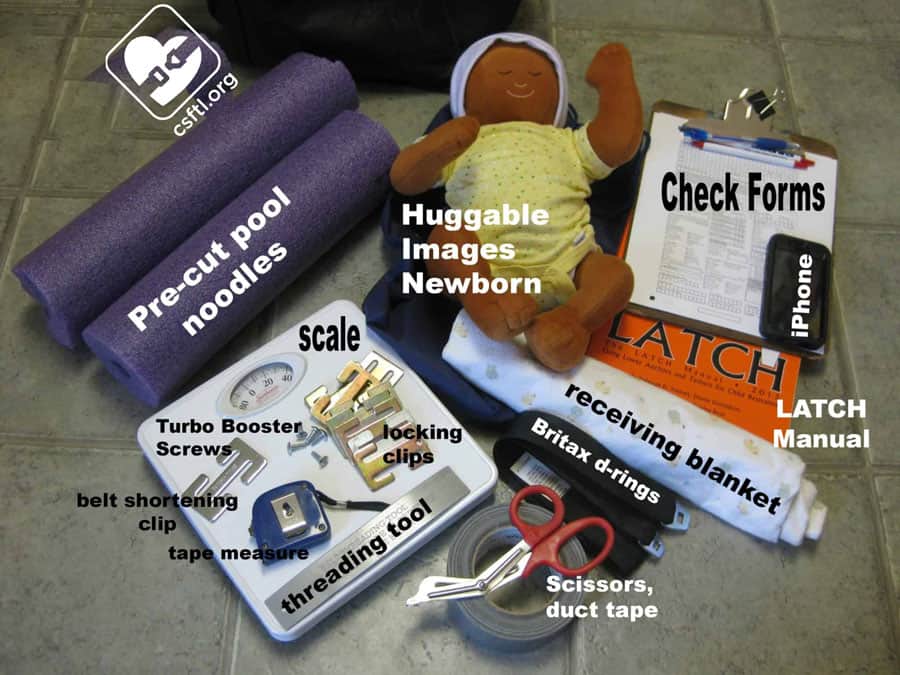What’s in your CPST kit? It’s a popular question that Child Passenger Safety Technicians ask one another, so we wanted to take a moment to give a tour of many of the items we tend to carry in our tech bags. The bag you see here is large enough to carry the CPST Instructor Guide, the CPST Technician Guide, the LATCH manual AND a laptop!
The CSFTL admin team works in a wide variety of capacities. Some of us work in hospitals, full or part-time, others volunteer with their local coalitions, and some of us work independently. During the course of our work days, some of us have access to a storage trailer or Safe Kids van that may contain many of these basic supplies, but we all have some version of our own tech kit that travels with us to every car seat check.
Huggable Images Newborn Doll
Huggable Images makes safety training dolls specifically for Child Passenger Safety. They have sizes ranging from preemie – 8 years old and they are really fantastic. The newborn doll weighs 7 pounds, is 17 inches long and has accurate proportions.
This doll is the perfect tool for teaching expectant parents how to properly buckle their baby. The torso is also somewhat rigid, which is helpful for teaching the pinch test.
Knuckle Saver (or other threading tool)
Before I became a CPST I saw a product that assisted in threading the seat belt through the car seat belt path. Had I known the path that life would lead me down, I would have ordered half a dozen on the spot! By the time I was going through my certification, that product was nowhere to be found.
Over the years I have searched high and low for a similar product but found nothing….until I found the Knuckle Saver.
The Knuckle Saver makes setting up a seat belt installation so much easier! Simply clip the Knuckle Saver onto the “male” end of the seat belt and route the narrow, semi-rigid Knuckle Saver through the car seat’s belt path. Grab the strap on the other side of the belt path to pull it the rest of the way through, unclip the Knuckle Saver from the latch plate, buckle the seat belt in and voila! Continue with the installation as usual, but with intact, scrape-free hands!
Seat Check Forms and Clipboards
Don’t skip the paperwork! Seat check forms are important for your records and they also help serve as a checklist so you don’t forget to cover anything important during a check. Don’t forget a clipboard to attach your form to if you’re using a paper form.
Need a form? Here are some options:
- Safe Kids Form – you must add your own liability waiver, but you can also customize with your organization’s logo.
- The National Digital Seat Check Form
Your state or coalition may have their own forms available as well. Check with your local coordinator for policies regarding storage of completed check forms and data reporting.
Smart Phone
Your smart phone is an invaluable tool at a car seat check event. You can download and store car seat manuals, access NHTSA’s website to look up recalls, and take photos of non-typical situations.
They’re also useful for callingthe manufacturer for advice or clarification during difficult seat checks. It’s important to know your resources and not be afraid to use them!
One word of caution: try to minimize the time you spend looking at your phone while you’re working with a caregiver.
LATCH Manual
Every Child Passenger Safety Technician should have a LATCH manual. I happen to have four, but I like to be prepared. The first half of the LATCH manual explains just about everything you need to know about how the LATCH system was developed and how it is meant to be used. The second half contains absolutely invaluable appendices detailing the locations of lower anchors and top tethers by vehicle, part numbers for retrofitting top tether anchors, rules about center lower anchor use, and so much more.
You need one. Possibly two. Just in case your one year old decides to use one for a paper shredding party. Or zombies. Just be prepared. Plus, if you order three, you get a discount! Who doesn’t love a discount? You can find them at Safe Ride News.
Receiving Blanket
Rolled receiving blankets can be used to help with the newborn fit. I use the blanket in my kid to demonstrate the proper way to use a rolled up receiving blanket for body support if their seat doesn’t come with a newborn insert.
CSPT Technician Guide
This guide is your constant companion during the CPST course and it’s equally useful during a car seat check, especially for brand new technicians. Don’t be afraid to share information from this guide or from the car seat’s manual with the caregivers you’re helping.
Miscellaneous Supplies
- Tape measure and scale: used to measure kids when their caregiver is unsure of their weight and height.
- Locking clips for vehicles that may not have locking seat belts.
- Threading tool: the handy little gadget pictured above came from a Baby Trend car seat, it’s just a flat piece of plastic but it’s great for helping shove a harness strap through a tight slot. Our friends at Knuckle Saver make one as well.
- TurboBooster screws: many parents forget to install the screws that came with their Graco TurboBooster. I called Graco and asked for a few spares and to give to parents that have forgotten. I also carry a screwdriver, which didn’t make it into the picture.
- Scissors and duct tape: these both are used often for trimming and/or taping pool noodles, removing tags from brand new seats, etc.
Other Items to Consider
- Stickers or other small goodies to give to older kids.
- Recall list. The one from NHTSA is consistently accurate.
- Sunscreen, especially for long outdoor check events!
- Gloves, mask, and hand sanitizer.
- CPST certification card. I’ve done hundreds of seat checks and never been carded, but I always encourage parents to ask if their CPST is currently certified! Find instructions here for how to print your card.
Pool Noodles
Sometimes (less so these days since more car seats now accommodate a wider range of recline angles) you need a pool noodle or a tightly rolled towel to achieve the correct angle of a rear facing car seat installation. It can be tricky to find pool noodles in Colorado in December, so I typically stock up during the summer months to last through the year.
Look for noodles that have a small hole in the middle, or even better; no hole at all. They aren’t as squishy and are much easier to work with. A full length pool noodle doesn’t fit very nicely in my bag, so I cut them in thirds first. This works out nicely because they end up about 13 inch section and I can trim for a perfect fit when I need one.
We Appreciate YOU! Win Your Own LATCH Manual!
We know how hard Child Passenger Safety Technicians work and we are celebrating CPST Month with some giveaways just for CPSTs. Enter below to win one of TEN! LATCH manuals! You must be a currently certified U.S. or Canadian Child Passenger Safety Technician to enter (we’ll verify this by asking for a copy of your CPST card). Please read the Giveaway Terms and Conditions before entering.
